
Helene Bertha Amalie "Leni" Riefenstahl was a German film director, photographer and actress known for her role in producing Nazi propaganda.

Mountaineering, mountain climbing, or alpinism, is a set of outdoor activities that involves ascending tall mountains. Mountaineering-related activities include traditional outdoor climbing, skiing, and traversing via ferratas. Indoor climbing, sport climbing, and bouldering are also considered variants of mountaineering by some.

Georg Wilhelm Pabst was an Austrian film director and screenwriter. He started as an actor and theater director, before becoming one of the most influential German-language filmmakers during the Weimar Republic.
Arnold Fanck was a German film director and pioneer of the mountain film genre. He is best known for the extraordinary alpine footage he captured in such films as The Holy Mountain (1926), The White Hell of Pitz Palu (1929), Storm over Mont Blanc (1930), The White Ecstasy (1931), and S.O.S. Eisberg (1933). Fanck was also instrumental in launching the careers of several filmmakers during the Weimar years in Germany, including Leni Riefenstahl, Luis Trenker, and cinematographers Sepp Allgeier, Richard Angst, Hans Schneeberger, and Walter Riml.

The Holy Mountain is a 1926 German mountain film directed by Arnold Fanck and starring Leni Riefenstahl, Luis Trenker and Frida Richard. It was the future filmmaker Riefenstahl's first screen appearance as an actress. Written by Arnold Fanck and Hans Schneeberger, the film is about a dancer who meets and falls in love with an engineer at his cottage in the mountains. After she gives her scarf to one of his friends, the infatuated friend mistakenly believes that she loves him. When the engineer sees her innocently comforting his friend, he mistakenly believes she is betraying him.
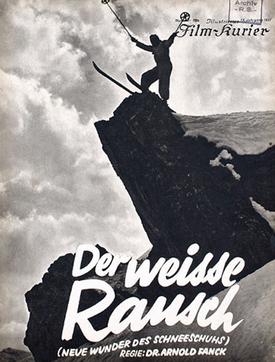
The White Ecstasy is a 1931 German mountain film written and directed by Arnold Fanck and starring Hannes Schneider, Leni Riefenstahl, Guzzi Lantschner, and Walter Riml. The film is about the skiing exploits of a young village girl, and her attempts to master the sport of skiing and ski-jumping aided by the local ski expert. Filmed on location in Sankt Anton am Arlberg, the film was one of the first to use and develop outdoor film-making techniques and featured several innovative action-skiing scenes.
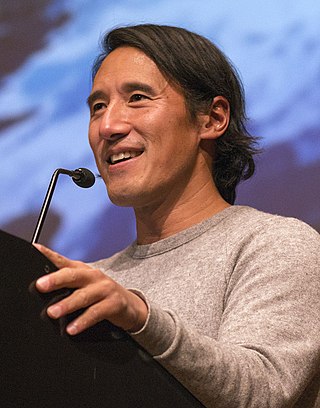
Jimmy Chin is an American professional mountain athlete, photographer, film director, and author.

The White Hell of Pitz Palu is a 1929 German silent mountain film co-directed by Arnold Fanck and G. W. Pabst and starring Leni Riefenstahl, Gustav Diessl, Ernst Petersen, and World War I pilot Ernst Udet. Written by Fanck and Ladislaus Vajda, the film is about a man who loses his wife in an avalanche while climbing the Piz Palü mountain, and spends the next few years searching the mountain alone for her body. Four years later he meets a young couple who agree to accompany him on his next climb. The White Hell of Pitz Palu was filmed on location in the Bernina Range in Graubünden, Switzerland.
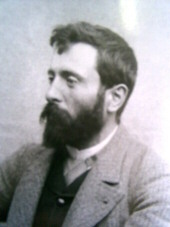
Vittorio Sella was an Italian photographer and mountaineer, whose photographs of mountains are regarded as some of the finest ever made.
Hans Ertl was a German mountaineer and Nazi propagandist. He is most known for being the father of Monika Ertl, the Communist guerrilla who assassinated Roberto Quintanilla Pereira, the man responsible for chopping off Che Guevara's hands.
Walter Riml was an Austrian cameraman and actor.

The Blue Light is a black-and-white 1932 film directed by Leni Riefenstahl and written by Béla Balázs with uncredited scripting by Carl Mayer. In Riefenstahl's film version, the witch, Junta, played by Riefenstahl, is intended to be a sympathetic character. Filming took place in the Brenta Dolomites, in Ticino, Switzerland, and Sarntal, South Tirol.
The Kathmandu International Mountain Film Festival (KIMFF) has been held in Kathmandu since 2000. Starting out as a biennial festival, KIMFF turned annual and competitive in 2007. KIMFF typically takes places around 11 December to coincide with the International Mountain Day.

Ueli Steck was a Swiss rock climber and mountaineer. He was the first to climb Annapurna solo via its South Face, and set speed records on the North Face trilogy in the Alps. He won two Piolet d'Or awards, in 2009 and 2014. Having previously summitted Mount Everest, Steck died on 30 April 2017 after falling during an acclimatizing climb for an attempt on the Hornbein route on the West Ridge of Everest without supplemental oxygen.
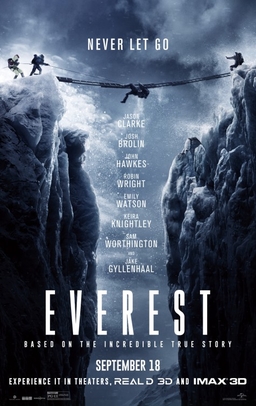
Everest is a 2015 biographical survival adventure film directed and produced by Baltasar Kormákur and written by William Nicholson and Simon Beaufoy. It stars an ensemble cast of Jason Clarke, Jake Gyllenhaal, Josh Brolin, John Hawkes, Robin Wright, Michael Kelly, Sam Worthington, Keira Knightley, Martin Henderson and Emily Watson. It is based on the real events of the 1996 Mount Everest disaster, and focuses on the survival attempts of two expedition groups, one led by Rob Hall (Clarke) and the other by Scott Fischer (Gyllenhaal).
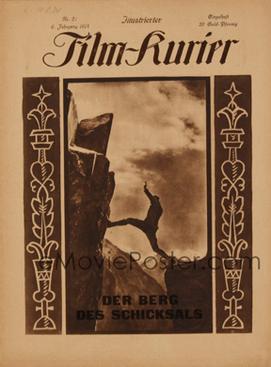
Mountain of Destiny is a 1924 German silent drama film written and directed by Arnold Fanck and starring Hannes Schneider, Frida Richard, Erna Morena, and Luis Trenker. The film is about an alpinist who falls to his death while climbing a dangerous peak. His son later succeeds where his father had failed. The film was released in the United Kingdom with the title The Mountaineers. After seeing Mountain of Destiny, Leni Riefenstahl, then a dancer, decided she wanted to start appearing in films. She got in touch with Fanck and starred in his 1926 film The Holy Mountain.
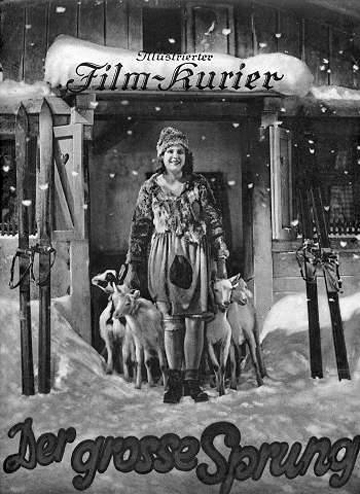
The Great Leap is a 1927 German silent comedy film directed by Arnold Fanck and starring Leni Riefenstahl, Luis Trenker and Hans Schneeberger. A young Italian girl living in the Dolomites falls in love with a member of a tourist party skiing on the nearby mountains.

Josef “Sepp” Allgeier was a German cinematographer who worked on around fifty features, documentaries and short films. He began his career as a cameraman in 1911 for the Expreß Film Co. of Freiburg. In 1913 he filmed newsreels in the Balkans. He then became an assistant to Arnold Fanck, a leading director of Mountain films. He worked frequently with Luis Trenker and Leni Riefenstahl, both closely associated with the genre. He was Riefenstahl's lead cameraman on her 1935 propaganda film Triumph of the Will. During the Second World War, Allgeier filmed material for newsreels. He later worked in West German television. His son is the cinematographer Hans-Jörg Allgeier.

German: Stürme über dem Mont Blanc is a 1930 German film written and directed by Arnold Fanck and starring Leni Riefenstahl, Sepp Rist and Ernst Udet. The film is part of the German film genre of "mountaineering", popularized by Fanck. The story revolves around a man who works alone at the Mont Blanc weather station gathering data. His only contact with the world below is via Morse code signals. He is joined by a woman friend, who helps him survive a terrible storm over the mountain. Ernst Udet is featured as a pilot who is involved in a dangerous mountain rescue.

The Exilles Fort is a fortified complex in the Susa Valley, Metropolitan City of Turin, Piedmont, northern Italy. Together with the nearby Fort of Fenestrelle and the Forte Albertino it was part of the defensive line between the House of Savoy lands and France: both these states held it in different phases depending on the outcome of the various wars. It is located on a spur commanding one of the narrowest sections of the Susa Valley, along the main road connecting Turin to France.
















